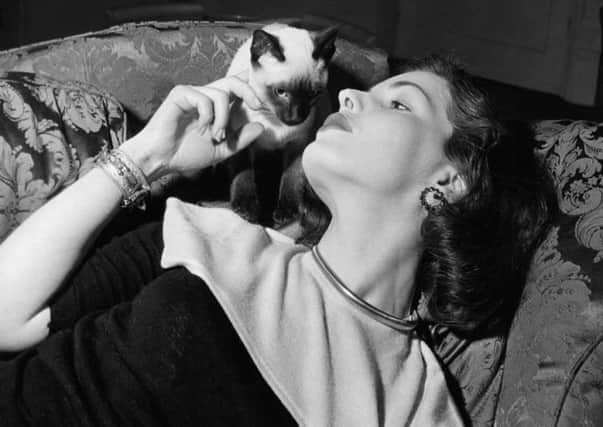Obituary: Elizabeth Sellars, Scottish actress who refused to play by Hollywood rules


Elizabeth Sellars was born in Glasgow, made her film debut in the Clydeside drama Floodtide in 1949 and went off to Hollywood in the 1950s where she acted alongside Bogart and Brando, though her name will mean nothing to most people today.
She refused to play the Hollywood game. After turning down a long-term contract with MGM, she returned to Britain, where she acted mainly in theatre and television, playing Laurence Olivier’s wife in John Mortimer’s A Voyage Round My Father in 1982.
Advertisement
Hide AdAdvertisement
Hide AdEven before going to Hollywood she had shown her free spirit – or awkwardness depending on your perspective – by taking time out from acting to study law and then going off on a gap year to Ceylon (Sri Lanka), where she developed a passion for curries and sitar music long before chicken tikka masala became Britain’s national dish.
Early in her career Sellars said: “The stage comes first, the law second, and marriage a very bad third.” The English director Charles Crichton reckoned she was “a cross between the early allure of Ingrid Bergman and the power of Bette Davis”, but many producers and journalists considered her “intellectual” – a negative quality in an actress in those days – and “confusing”.
She did marry eventually in 1960, to a Harley Street doctor, and she cut down on acting after that. Her last television appearance was 30 years ago and she had not been in a film since playing Sarah Miles’s mother in The Hireling in 1973. She has been largely forgotten except by keen film fans and film historians, though she herself felt she had had a “good innings” as an actress.
Elizabeth McDonald Sellars was born in the West End of Glasgow in 1921. Her father had a painting and decorating business. She went to boarding school in England and developed an interest in acting and theatre. She studied at RADA, the Royal Academy of Dramatic Art in London, and worked as an assistant stage manager at the Lyceum in Edinburgh and the Alhambra in Glasgow.
She acted professionally at the Lyceum, then in the London West End and in film, appearing in Floodtide, with Gordon Jackson, then as a cheeky Scottish maid in David Lean’s Madeleine (1950), which was also set in Glasgow, and the thriller Cloudburst (1951), the first Hammer film made at the famous studios in Bray, Berkshire – she also has the distinction of having been in Hammer’s final Bray film, The Mummy’s Shroud, 16 years later, by which time Hammer had established themselves as brand leaders in the horror field.
Somehow she also found time to study law. She said later: “Audiences are fickle and if they get tired of me I can always practise law. I’ve already completed five years of law studies in England, and I like to keep my hand in. I really study law as a hobby. It’s fun, like crossword puzzles exercise your brain.”
Opportunities for actresses were limited in a male-dominated industry intent on celebrating British heroism, sacrifice and victory in the recent world war.
But Sellars carved out a career playing girlfriends and rather neurotic characters in thrillers, dramas and melodramas, some of which went out as B-movies, the bottom half of the double bill that was standard fare at the time, in forgotten titles such as Hunted, Night was Our Friend and The Gentle Gentleman, in which John Mills and Dirk Bogarde were in the IRA and both were in love with Sellars. Bogarde reckoned she was the most exciting actress with whom he had ever worked and Mills said she was “undoubtedly one of the most talented actresses in film today”.
Advertisement
Hide AdAdvertisement
Hide AdHollywood came calling when she was cast as Humphrey Bogart’s wife in the big-budget drama The Barefoot Contessa in 1954, though it was very much a secondary role – Ava Gardner had the juicy lead role. In Désirée, Marlon Brando was Napoleon, Jean Simmons had the title role of his lover and Sellars was her sister. In Prince of Players, Richard Burton was the legendary 19th Century American actor Edwin Booth, overshadowed by his brother John Wilkes Booth, who shot President Lincoln. Once again Sellars was the sister.
“They were not interested in promoting you unless you agreed to a long-term contract,” she said. “MGM wanted to sign me up and I would have played Nero’s wife in Quo Vadis. I never saw myself as a superstar, but perhaps if I had accepted, I might have become one.”
Back in England in 1957 she played the lead in the first British production of Robert Anderson’s Tea and Sympathy, a play that was so controversial that the London theatre where it was staged had to temporarily turn itself into a “club” to circumvent theatre censorship rules. She played the wife of a sports master at a private school and provides a little more than the titular tea and sympathy for a senior boy whose sexuality is in question.
In the early 1960s she was a member of the Royal Shakespeare Company and starred in the film The Day They Robbed the Bank of England with a young Peter O’Toole, and she had a recurring role in the little-remembered BBC TV sci-fi series R3 with a young Oliver Reed. The series is now missing, believed wiped.
A few years later she was back at the Lyceum in William Douglas Home’s A Friend Indeed and she played the titular Scottish teacher in the London West End production of The Prime of Miss Jean Brodie. She appeared in a string of one-off television plays and had a starring role in the mini-series Winter Sunlight in 1984. Latterly she lived in France. Her husband died in 2009. She is survived by a stepson.
Brian Pendreigh